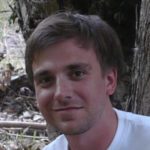Link to Pubmed [PMID] – 33213471
Link to DOI – 10.1186/s12936-020-03482-4
Malar J 2020 Nov; 19(1): 413
After a marked reduction in malaria burden in Cambodia over the last decades, case numbers increased again in 2017-2018. In light of the national goal of malaria elimination by 2025, remaining pockets of high risk need to be well defined and strategies well-tailored to identify and target the persisting burden cost-effectively. This study presents species-specific prevalence estimates and risk stratification for a remote area in Cambodia.A cross-sectional survey was conducted in 17 villages in the high-incidence province Mondulkiri in the dry season (December 2017 to April 2018). 4200 randomly selected participants (2-80 years old) were tested for Plasmodium infection by PCR. Risk of infection was associated with questionnaire-derived covariates and spatially stratified based on household GPS coordinates.The prevalence of PCR-detectable Plasmodium infection was 8.3% (349/4200) and was more than twice as high for Plasmodium vivax (6.4%, 268) than for Plasmodium falciparum (3.0%, 125, p < 0.001). 97.8% (262/268) of P. vivax and 92.8% (116/125, p < 0.05) of P. falciparum infections were neither accompanied by symptoms at the time of the interview nor detected by microscopy or RDT. Recent travels to forest sites (aOR 2.17, p < 0.01) and forest work (aOR 2.88, p < 0.001) were particularly strong risk factors and risk profiles for both species were similar. Large village-level differences in prevalence of Plasmodium infection were observed, ranging from 0.6% outside the forest to 40.4% inside. Residing in villages at the forest fringe or inside the forest compared to outside was associated with risk of infection (aOR 2.14 and 12.47, p < 0.001). Villages inside the forest formed spatial hotspots of infection despite adjustment for the other risk factors.Persisting pockets of high malaria risk were detected in forested areas and in sub-populations engaging in forest-related activities. High levels of asymptomatic infections suggest the need of better case detection plans and the predominance of P. vivax the implementation of radical cure. In villages inside the forest, within-village exposure was indicated in addition to risk due to forest activities. Village-level stratification of targeted interventions based on forest proximity could render the elimination efforts more cost-effective and successful.


